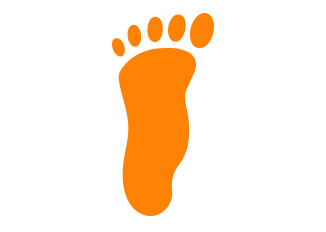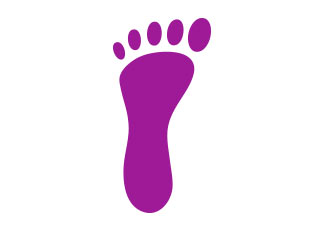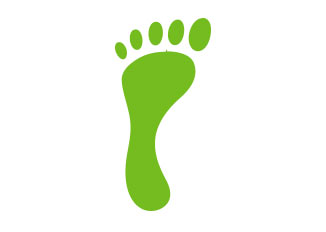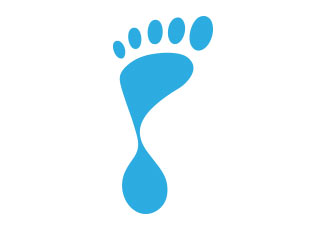It's that time of year again, school's back and that can only mean one thing - new school shoes! As you enter the school shoe arena, it can be daunting trying to sift through the never-ending options with each shoe promising the world… Some promise longer wear while others proclaim superior support. With so much on offer, how do you know when you've found the best fit? To help demystify your school shoe selection, we sat down with the experts at My Foot Doctor, to help you find the perfect home for your little one's feet.
Why the Right Fit Is So Important for Your Child's Feet
Many adult foot ailments originate in childhood and often lead to problems in other parts of the body. Foot deformity, compromised foot function and increased potential for aches and pains, can all result from school shoes lacking quality and the right fit.
The Two Most Important Things to Look for in Kids' School Shoes
Quality and fit. It might seem like an obvious thing to look for, but this one can get overlooked. The better quality and the more support the shoe offers - the less chance of movement-related injury. The more cushioning the shoe provides - the less chance of impact-related stress.
As for fit, there are no second chances when fitting shoes for children. A child's foot is vulnerable to injury and deformity from restrictive or ill-fitting shoes. Ensure the length of the shoe is suited to your child's feet, with enough space for the toes to spread without pressure.
| Age | Size (US) | CM | |
|---|---|---|---|
| Toddler | 12 mths - 4 yrs | 4 | 10 |
| 5 | 11 | ||
| 6 | 12 | ||
| 7 | 13 | ||
| 8 | 14 | ||
| 9 | 15 | ||
| 10 | 16 | ||
| Pre-School (PS) | 4 - 8 yrs | 11 | 17 |
| 12 | 18 | ||
| 13 | 19 | ||
| 1 | 20 | ||
| 2 | 21 | ||
| 3 | 22 | ||
| Grade School (GS) | 8 - 12 yrs | 4 | 23 |
| 5 | 23.5 | ||
| 6 | 24 | ||
| 7 | 25 |
Tips to Prevent Blisters and Foot Pain in Kids’ School Shoes
Fun fact, a pair of feet has over 250,000 sweat glands. You can imagine how this additional moisture combined with a shoe that doesn't fit correctly, can lead to a blister conundrum. You want to look out for the right shoe length and width, with enough room to accommodate your child's foot. Fresh socks always help here, not to mention those crisp whites pop nicely in the school yard!
Tips to Reduce Sever's Disease (Heel Pain)
This may come as a surprise, but heel pain is actually quite common in children. You could call these 'growing pains', as there are various changes occurring during this critical development stage. Combine this with shooting a few hoops at lunch, kicking a football around or jumping a little rope, and the need for quality heel support is clear. Here's what to look out for:
- Ensure the base of the shoes are not flat and have a heel elevation (heel drop).
- If this isn't provided, a technical innersole may help.
- Quality footwear also offers greater cushioning technology. The addition of shoe tech like Gel or Air is also something that can help reduce the impact related pressure.
Foot Type Cheat Sheet
What to Look for if Your Child Has These Qualities
Flat Foot:
Arch support and duomax midsole technology.

Low Arch:
Arch support and shoe uppers that offer greater support (consider leather).

Normal Arch:
Variable lacing holes to allow for shoe adjustment and midsole cushioning technology.

High Arch:
Cushioning and flexible soled shoes.

8 Steps to School Shoe Success
1: Measure both feet for size and confirm the shoe's size availability, including full and half sizes with different widths.
2. Buy shoes that fit your child's food right now, instead of purchasing a size they'll grow into.
3: Determine foot shape and arch profile. Most quality shoes should offer heel, arch, upper support and foot stabilisation features.
4: Identify the purpose for their shoes. Does your child play netball or basketball, do they like running?
5: Consider shoes with an emphasis on quality cushioning and durability.
6: Opt for shoes with variable lacing options (the number of holes).
7: Remember that shoes can remove the insole. If feet are different sizes you may require two insoles, or none in the event that one foot is wider than the other.
8: Go for synthetic upper shoes or leather.
Our Customers’ Most Top-Rated School Shoes
Check out our range of top-rated school shoes and black leather sports shoes as an alternative to traditional school shoes, for younger, older and senior kids!
Features to consider when choosing the right pair for your child:
- Gel technology for maximum shock absorption
- Heel drop to reduce pressure from the heel and achilles in growing children
- Ability to get a comfortable and snug fit according to their foot width (wide to narrow) and arch type (flat-feet to high arch)
Ready to Shop?
Check out our entire range of back to school shoes online, or head in-store and speak to one of our friendly rebel staff to help you find the right fit for your child.
Author
Sports Podiatrist Paul BoudvilleWritten in partnership with My FootDr
